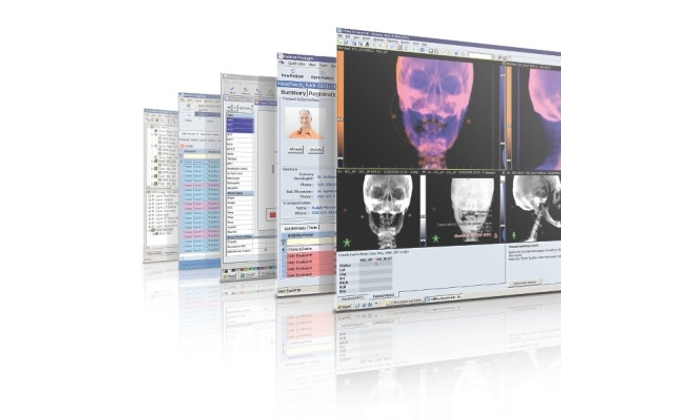 ARIA® oncology information system is optimized to facilitate processes within a comprehensive cancer center, many hospitals and health systems also use an enterprise-wide software solution such as McKesson® or Epic®. Consequently, Varian engineers have worked to develop interfaces that allow information to be shared between ARIA and enterprise software solutions.
ARIA® oncology information system is optimized to facilitate processes within a comprehensive cancer center, many hospitals and health systems also use an enterprise-wide software solution such as McKesson® or Epic®. Consequently, Varian engineers have worked to develop interfaces that allow information to be shared between ARIA and enterprise software solutions.
“While EPIC and other hospital-wide EMR solutions enable certain processes, ARIA has specialized workflow tools that are critical for efficient care delivery in an oncology department, said Sukhveer Singh, vice president of the Oncology Continuum Solutions group at Varian. “ARIA has been specifically engineered to facilitate the very unique processes that comprise oncology care, from diagnosis to survivorship. However, we recognize that oncology departments must be able to share essential information with enterprise systems, to facilitate patient management, billing, and other important functions. ARIA uses standard protocols that enable information transfer so that users do not have to enter data in multiple places. And the creation of interfaces facilitates the transfer of information with specific enterprise solutions.”
 Cone Health in North Carolina, the ARIA oncology information system was adopted across two cancer center sites through a full-scale deployment in 2013, with robust connectivity between ARIA and Cone Health’s Epic system. “We’ve greatly improved our workflows and enhanced quality and safety for our patients by taking this approach,” notes Benjamin Sintay, PhD, chief physicist at Cone Health. “In our old system, the information didn’t come to us – we had to go and find it. With ARIA/EPIC connectivity, we have full access to the information we need virtually anytime and anywhere in the world.”
Cone Health in North Carolina, the ARIA oncology information system was adopted across two cancer center sites through a full-scale deployment in 2013, with robust connectivity between ARIA and Cone Health’s Epic system. “We’ve greatly improved our workflows and enhanced quality and safety for our patients by taking this approach,” notes Benjamin Sintay, PhD, chief physicist at Cone Health. “In our old system, the information didn’t come to us – we had to go and find it. With ARIA/EPIC connectivity, we have full access to the information we need virtually anytime and anywhere in the world.”
ARIA provides specially designed interfaces for data exchange, and enables users to set up a comprehensive workflow with comprehensive integration, documentation, and data sharing across ARIA and EPIC. Clinicians and administrators can access data on one screen, in real-time without having to switch between multiple systems to pull data to form a complete clinical picture.
Cone Health uses ARIA version 13.6, which offers a set of standard interfaces that allows the flow of demographic, schedule, document, and charge data between ARIA and EPIC. For example, the admission, discharge and transfer (ADT) interface allows data to flow from EPIC to ARIA, as does the office appointments scheduling interface. Other standard interfaces, such as those for charges and treatment appointments scheduling, allow data to flow from ARIA to EPIC.
Optional features include interfaces for exporting a radiation treatment summary to EPIC, which enables clinicians to view a defined set of data elements throughout the patient’s course of treatment. Some optional interfaces allow the bidirectional flow of data between ARIA and EPIC, such as interfaces for a one-time scheduling load; documents; and lab orders & results.
Sintay and his colleagues worked with Varian application specialists to implement and configure a set of interfaces for their ARIA/EPIC connectivity at Cone Health Cancer Center at Wesley Long in Greensboro and Cone Health Cancer Center at Alamance Regional in Burlington.
“Having information flow seamlessly between ARIA and EPIC allows us to access relevant radiation oncology data anytime and across information systems. In the future, we plan to transfer more specific discrete clinical data between systems.”
Go Live
One of the most challenging aspects of a full-scale ARIA/EPIC deployment was creating care paths that reflected departmental workflows and then mapping those workflows, says Sintay. Because their old system was paperless, it was also difficult to ensure that all the information transferred to the new ARIA system.
Sintay and his team were able to overcome these challenges through judicious use of Varian programs for onsite training (one-on-one and group sessions), online webinars, plus an engagement with Varian’s consulting services group. Before going “live” with the system, Varian set up a test environment and classrooms with computers, so staff could get familiar with the new system on their own. Varian engineers helped in testing and validating ARIA/EPIC connectivity, especially for the treatment planning elements.
Working with the Varian consultants, a super-user group composed of cross functional team members managed the command center during the three weeks of Go Live. “During our Go Live, the Varian team was onsite in full force, and they were great,” shares Sintay. “We were well-supported by Varian; they were more than willing to come back for a few days after Go Live to help resolve lingering issues. The Varian team is really aligned with our values: They put the well-being and care of our patients first, in the same manner as our Cone Health team.”
Why Cone Health Chose ARIA
“ARIA’s tools allow us to have a fully integrated environment in our department. For example, care paths functionality – a powerful feature of ARIA -- is one of the main reasons we chose ARIA as our oncology information system. Care paths allows you to outline the paths for treatment planning and the preparation process. Everyone involved in a patient’s care can look in ARIA and see what task needs to be completed next – and if they click on the task, ARIA will take them to the place in the system where they need to do that work. Care paths understand what needs to come before and after – it remembers every relationship between every task so that you don’t have to remember. Once a task is completed, ARIA automatically makes the next step happen for each patient at every stage of a patient’s care path. And each element in the care path is linked to the necessary documentation,” describes Sintay.
The encounters functionality complements the care paths tool by allowing users to create checklists of work that needs to be completed for each task in the care path. “At every stage of task completion, we use an encounters checklist, which allows us to standardize our work in a Lean world. Encounters bring all the information you need to you – such as prescription information, doctor notes, a patient’s schedule – on one screen so different teams around our department can access information,” remarks Sintay. “They can work down each checklist, uploading documents and adding questionnaires, and they can very quickly and easily see when their tasks for a patient are complete. It’s a useful feature that we use extensively, and we are excited to share our experience with other organizations.”
In addition to ARIA’s care path and encounters functionalities, Sintay and the Cone Health team chose ARIA because it allows them to customize the way they use their treatment planning system. “ARIA allows us to innovate to meet our needs and those of our patients. Not only can we can do our own scripting, but we are developing our own software that will seamlessly integrate with ARIA to dynamically pull information from the ARIA database into our own custom applications in real time. We are very excited about being able to make tools that fit the needs of our clinic perfectly and that will allow us to customize and optimize our workflows.”
